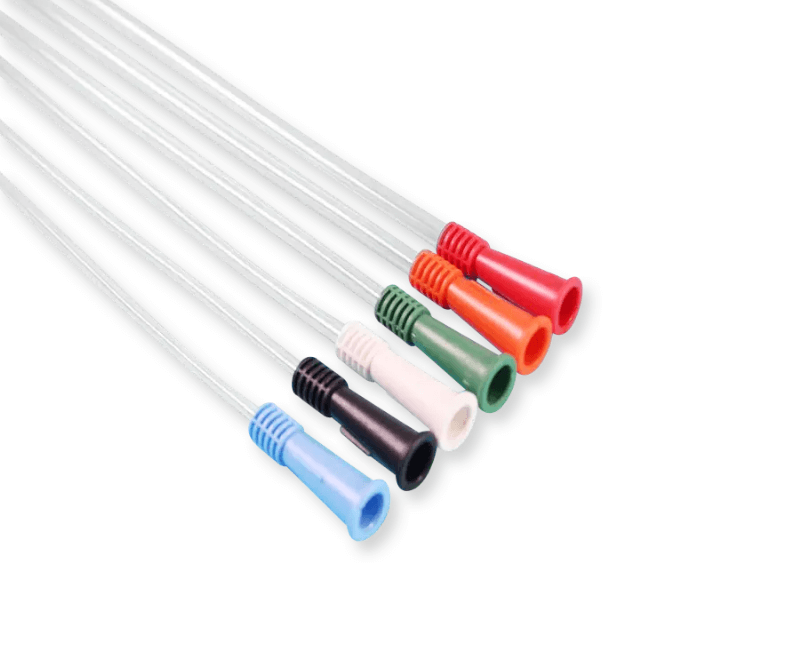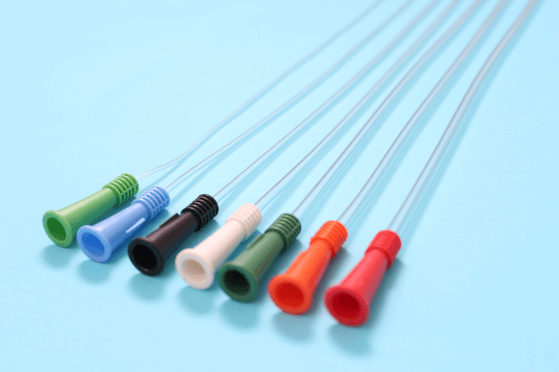After the holidays, kids are excited to play with their classmates again. For children who require catheters, this may be a bit challenging. But rather than focusing on the challenges, this can be an incredible time to assist them in constructing certainty in overseeing their catheter autonomously at school. A ready-to-use catheter may allow them to stay active and take an interest in school activities. If you're unsure, your child's healthcare provider can recommend the best option according to their needs. In this guide, we'll share practical tips for children (and their parents) on returning to school with a catheter. The Importance of Catheters Catheters are essential for some children. They help with urination, prevent urine retention, and protect the bladder from damage. Some medical conditions that require a catheter include: Neurogenic bladder (such as from spinal cord injury or spina bifida), which affects bladder control. Congenital urinary tract issues, making normal urination difficult. Post-surgery recovery, where a catheter is needed for proper urination. Using a catheter may feel strange at first, but with proper care and management, children can attend school, study, and play like others. Types of Catheters School life includes classes, sports, and breaks, so choosing the right catheter is important. Here are some common types and their uses: Intermittent Catheter Intermittent catheters are ready-to-use catheters that are very suitable for use in schools, they won't cause embarrassment and unsanitary conditions for children. Features: Pre-lubricated for easy insertion. Small and easy to carry in a backpack or pocket. Suitable for children who need to self-catheterize regularly. Best for: Children who need to empty their bladder at set times. Quick and hygienic use in school restrooms. Mitrofanoff Catheter A Mitrofanoff catheter is a tube that is intermittently inserted through the navel. It provides a self-sealing channel for children to insert a catheter to drain urine as needed. This is easier to manage than other types of catheters and is particularly useful for children who need to drain urine regularly. Features: A surgically created channel using the appendix or other tissue. A small opening in the abdomen for catheter insertion. Less discomfort than urethral catheterization. Best for: Children who cannot use regular catheters. Easier self-catheterization at school. External Catheter This type does not go inside the body but collects urine externally. It is commonly used for boys. Features: Worn like a small sleeve over the penis and connected to a urine bag. No insertion, reducing the risk of urethral injury. Best for: Children with urinary incontinence. Those who need a catheter throughout the day. How to Choose the Right Catheter? If the child needs to urinate regularly and master self-catheterize, an intermittent catheter is the best choice. If your child cannot use a regular catheter due to urethral stricture or other reasons, a Mitrofanoff catheter is more appropriate. For children with urinary incontinence, an external catheter may be a better choice. Remember, your doctor's advice and your child's comfort are also important criteria for selection, so be sure to confirm with your doctor. Self-Catheterization Techniques At school, children may need to catheterize in the restroom or nurse's office. Here's how to do it properly: 1. Prepare the catheter and lubricant (if not pre-lubricated). 2. Wash hands with soap or use alcohol wipes. 3. Clean the urethral opening to prevent infection. 4. Gently insert the catheter, staying relaxed and not forcing it. 5. Drain the urine completely and then slowly remove the catheter. 6. Dispose of the catheter (if disposable). 7. Wash hands and clean the area again. The Importance of Clean Intermittent Catheterization (CIC) Good hygiene prevents urinary tract infections (UTIs). Teach your child to: Always wash hands before and after catheterization. Use disposable catheters or clean reusable ones properly. Store catheters in a clean container or bag. Change urine bags daily (if using an external catheter). Managing a Catheterization Schedule A proper schedule prevents accidents and discomfort. A suggested school-day plan: Before school – Catheterize to avoid interruptions in the morning. During break time – Use the restroom to prevent bladder overfilling. Lunch break – Empty the bladder to stay comfortable in the afternoon. After school – Follow the usual home routine. Parents can communicate with school staff to ensure their child can use the restroom when needed. Conclusion Going back to school can be an adjustment for children who use catheters. But with the right catheter, proper technique, good hygiene, and a regular schedule, they can learn and play with confidence and comfort, just like other children. If you're unsure which catheter is best, talk to your doctor or a medical professional. Bever Medical’s ready-to-use catheters make the process simpler and more comfortable, providing reliable support for both medical providers and their patients.
View More +-
25 Feb 2025
Urethral stricture can happen for different reasons, including injury or intrinsic conditions. If you're encountering this issue, do not worry—just look for medical assistance. Your doctor will offer assistance with your condition and take the correct steps to assist you keep up with a normal life. Today, Bever Medical will talk about the causes of urethral stricture, and accessible treatment alternatives, as well as a few common questions and answers. What Is Urethral Stricture? Urethral stricture happens when scar tissue makes the urethra narrow, blocking urine flow. This will influence both men and ladies, but it is more common in men. The urethra is the tube that carries urine from the bladder to the outside of the body. When it becomes too narrow, you may have trouble urinating, experience weak urine flow, frequent urination, or even complete urine blockage. Severe cases can lead to infections or kidney problems. Causes of Urethral Stricture Urethral stricture happens when the urethra gets damaged or inflamed, leading to scarring. Common causes include: Injury: Falls, car accidents, or long-term catheter use can damage the urethra. Infections: Urinary tract infections (UTIs) and sexually transmitted infections (STIs) like gonorrhea can cause scarring. Medical procedures: Prostate surgery, cystoscopy, or repeated catheter use may injure the urethra. Chronic conditions: Skin diseases like lichen sclerosis can lead to urethral scarring. Birth defects: Some people are born with a narrow urethra. How to Treat Urethral Stricture Treatment depends on how severe the stricture is. Here are some common methods: 1. Using a Coude Catheter Doctors may use a Coude catheter (a curved-tip catheter) to help pass through the narrow part of the urethra. This type of catheter is easier to insert and reduces discomfort. A Coude catheter is useful for: ✔ Patients with urethral stricture who need a catheter. ✔ Cases where a straight catheter cannot pass through. ✔ Patients who had trouble using regular catheters before. 2. Urethral Dilation Doctors insert special rods or a balloon catheter to slowly widen the urethra. This provides short-term relief but may need to be repeated. 3. Internal Urethrotomy (DVIU) A doctor uses a small camera and a laser or blade to cut the scar tissue. This works well for mild cases but may not be a permanent solution. 4. Urethroplasty (Surgery) For severe or repeated strictures, a surgeon removes the scar tissue and reconstructs the urethra using tissue from another part of the body, like the mouth. This offers a long-term fix. 5. Self-Dilationat Home Some patients may be advised to use soft catheters at home to prevent the urethra from narrowing again. This should be done under a doctor's guidance. 6. Lifestyle Changes to Prevent Urethral Stricture A healthy lifestyle can help prevent acquired urethral strictures. Try the following to reduce the risk: Stay hydrated to promote urine flow and reduce the risk of infection. Avoid holding urine for long periods to reduce bladder pressure. Avoid high-risk sexual behavior to prevent urinary tract infections caused by sexually transmitted diseases. Get medical help early if you notice any urinary problems. FAQs About Urethral Stricture Do I need surgery for urethral stricture? Not always. Mild cases can be managed with catheters or dilation. Surgery is only needed for severe or recurring strictures. How do I know if I have a urethral stricture? If you have weak urine flow, trouble urinating, frequent urination, or urine blockage, see a doctor. A urine flow test or imaging scan can confirm the condition. Does using a Coude catheter hurt? A Coude catheter is designed to reduce discomfort. However, there may be some mild discomfort. Using a sterile lubricant helps. Can urethral stricture come back after treatment? Yes, it can. Even after treatment, some patients experience recurring strictures. The effects of treatment for urethral stricture may diminish over time, especially longer strictures, which are more likely to recur. Does urethral stricture affect sexual function? Urethral stricture may cause sexual dysfunction due to difficulty urinating and weak urine flow. In severe cases, it can affect ejaculation and even cause retrograde ejaculation (when semen flows backward into the bladder). If symptoms such as pain occur, you should seek medical attention immediately. Choose a High-Quality Coude Catheter for Better Urethral Health It's great important for patients with urethral stricture to choose the right catheter. Beaver Medical provides hospitals with high-quality Coude Catheters, they help urologists and patients solve the difficulties of catheterization caused by urethral stricture. If your hospital is purchasing bulk catheters, you can consider our medical-grade silicone or PVC catheter products, contact us now to customize urological care solutions.
View More + -
07 Mar 2025
Intermittent Self-Catheterization (ISC) may be strange for many patients, and it is inevitable to feel overwhelmed when trying it for the first time. This article carries the most asked questions about intermittent catheterization and their answers. Check out this article to learn how they can help you solve your doubts. In addition, if you are a novice, some questions may need to be discussed with your doctor more. Q: Why do I need catheterization? A: Catheterization makes a difference in purging the bladder. It is more often than not required when the bladder is incapable of storing and/or purging urine regularly, such as in patients with bladder dysfunction or urinary maintenance. Common causes incorporate neurological illnesses (like spinal cord damage or multiple sclerosis), enlarged prostate, urethral stricture, or post-surgery recovery. You'll be able to inquire of your specialist for more data, who will prompt you on whether to utilize an intermittent catheter kit unit or other ways to manage your urinary issues. Q: How does self-catheterization work? A: It includes employing a sterile expendable catheter (a lean, adaptable tube) to drain urine from the bladder regularly throughout the day. The complete preparation ordinarily takes a fair amount of time and can be done autonomously at home without medical staff help. Q: How long will I need to catheterize? A: The length depends on your particular health condition and your doctor's suggestion. A few patients may only require short-term use, such as after post-surgery recovery, whereas others may require it long-term. Q: How often should I catheterize? A: Ordinarily, the frequency of catheterization depends on the urine volume and bladder function. It is for the most part prescribed to catheterize each 4-6 hours to anticipate urine maintenance. This interim may shift based on your daily fluid intake, so it's important to examine it along with your doctor. Q: Will ISC hurt? A: It may well be marginally uncomfortable but should not be painful. Most patients experience little to no pain once they undergo the right procedure. On the off chance that you're feeling pain, utilizing the proper intermittent catheter and applying lubricant can offer help in reducing discomfort. On the off chance that the torment continues, contact your supplier as this may be a sign of infection or other issues. Q: Sometimes I have difficulty locating the urethral opening. What should I do? A: Seek help from your healthcare professional. With practice, the process will become smoother. Q: What should I do if I can't insert the catheter? A: Try to relax and avoid rushing or forcing the catheter in. If you encounter resistance, stop and wait for a moment. If repeated attempts fail, it could be due to urethral spasms or blockage, so consult your doctor. Q: What should I do if I can't remove the catheter? A: Relax your body and gently pull out the catheter. If you encounter resistance, do not pull forcefully, and try deep breathing to relax. If the issue persists, seek medical attention immediately. Q: I sometimes notice blood in my urine. Is this normal? A: A little sum of blood amid the early hone of ISC can be caused by mild bothering of the urethra and ordinarily isn't an issue. Be that as it may, in case you have significant blood in your urine or persistent bleeding, look for medical help instantly. Q: How can I prevent urinary tract infections? A: Following these tips can help a lot: Use sterile intermittent catheters Keep your hands and genital area clean Follow the recommended catheterization frequency to avoid urine retention Drink plenty of water (at least 1.5-2 liters per day for adults) to help flush the bladder Q: What should I do after completing self-catheterization? A: Clean the catheterization area and dispose of the used catheter. Be sure to wash your hands afterward and record the time and volume of your catheterization for your doctor to assess bladder function. Q: How do I know if I have a urinary tract infection? A: Common symptoms include frequent urination, urgency, pain during urination, unusual or cloudy urine, and fever. If you experience these, seek medical attention. Q: What should I do if I have a urinary tract infection? A: You should consult your doctor for a urine test and follow their instructions to take antibiotics. Also, increase your water intake to help flush the bladder. Q: Why is it important to clean the genital area after bowel movements? A: To prevent bacteria from entering the urethra and reduce the risk of urinary tract infections, especially in female patients. Q: Do I need to catheterize at night? A: It depends on your circumstance. On the off chance that there's critical urine maintenance at night, you'll have to catheterize some time before bed or during the night. Your healthcare supplier will direct you on how to continue. Q: Will using a catheter affect my sex life? A: Generally, it does not affect your sex life, though some patients may need additional psychological or physical adjustment. You can consult your doctor or a specialist for advice. Q: What should I do if I travel abroad? A: If you're traveling overseas, make sure to bring sufficient catheter supplies in your intermittent catheter kit and a therapeutic certificate from your healthcare provider. A few nations may not have easy access to catheters, so it's vital to check airline and passage nation controls and be prepared with a backup catheterization arrangement. Q: How often can I use the catheter, and does it have an expiration date? A: Bever Medical intermittent catheters are single-use. To avoid cross-contamination, dispose of the catheter after use. Check the expiration date on the packaging to ensure you are using a product within the standard requirements. Q: Where and how should I store my disposable catheter? A: Store it in a dry, clean environment, away from direct sunlight and humidity, to prevent contamination. Conclusion It can make patients' lives easier after reading these basic answers to these questions. If you don't know how to do yet, it's wise to ask your medical provider for more professional answers based on your situation. I believe you can manage your bladder health with confidence. If you need high-quality intermittent catheters, Bever Medical offers a variety of professional catheterization products to meet different needs. Any interests, please feel free to contact us.
View More + -
19 Mar 2025
If you have been diagnosed with stress urinary incontinence, your doctor will suggest hydrophilic catheters or some uncoated catheters. Each of these catheters has its benefits, only knowing the differences can make the right decision. In this article, BEVER Medical shares the key differences between these two catheters. So, how to know which is the right choice for you? What is a Hydrophilic Catheter? A hydrophilic intermittent catheter is a sort of catheter planned with a extraordinary hydrophilic coating that gets to be greased up when uncovered to sterile water or saline. This coating reduces friction, making inclusion and expulsion smoother and more comfortable. Most hydrophilic catheters come with a water bundle interior, allowing users to enact the coating some time before use. Hydrophilic catheters are perfect for patients who need to alter catheters numerous times a day, such as outgoing business, travel, study and work, etc. They give a sterile, touch-free encounter, decrease the chance of urinary tract diseases (UTIs), and minimize urethral disturbance. For male patients, hydrophilic catheters can adjust to the longer urethra, giving a smoother, more comfortable insertion encounter. Hence, it is a perfect choice for male intermittent catheters, guaranteeing a more secure and more helpful catheterization process. hydrophilic intermittent catheter Benefits of Hydrophilic Catheters Pre-lubricated: No need for additional lubricants; the coating activates with water. Reduced Friction: Provides a smoother insertion process, minimizing urethral trauma. Lower Risk of UTIs: The hydrophilic coating helps reduce bacterial contamination. Convenience: Comes with an integrated sterile water packet for activation, making it a ready-to-use solution. Less Mess: No need to handle external lubricants, offering a more hygienic experience. What is an Uncoated Catheter? An uncoated catheter is a standard catheter without a pre-applied lubricating layer. Users must physically apply a sterile grease or gel some time recently addition. These intermittent catheters have different sizes and materials, including silicone and PVC, permitting users to choose a sort that best suits their needs. Uncoated catheters are commonly utilized in clinical settings and by people who lean toward controlling the sum and sort of lubricant applied. They are regularly more cost-effective than hydrophilic catheters and can be a commonsense choice for those who don't require frequent catheterization or favor a customized lubrication experience. Benefits of Uncoated Catheters Cost-Effective: Typically more affordable than hydrophilic options. Customizable Lubrication: Users can choose the type and amount of lubricant that works best for them. Lightweight and Compact: Easier to store and carry for those who need discretion. Versatile: Available in multiple materials and sizes to suit different needs. The Biggest Difference One of the biggest differences between hydrophilic and uncoated intermittent catheters is their lubrication method. Most hydrophilic intermittent catheters come with a sterile water packet inside the packaging, which activates the smooth coating, allowing for faster and easier insertion. In contrast, uncoated catheters do not include sterile water or saline solution, requiring users to apply lubrication separately. Both catheter types are designed for single-use and are easy to insert, making them suitable for patients who travel frequently or need a reliable, portable option for their daily routine. For individuals with busy schedules, hydrophilic catheters provide added convenience and hygiene, while uncoated catheters offer a customizable experience. Important Note: If you experience pain or discomfort during catheterization, consult your healthcare provider immediately. What is the Right Choice for Me? The right choice depends on individual preference and convenience. A few people favor the hydrophilic catheter due to its pre-lubricated plan and reduced hazard of contamination, whereas others select uncoated catheters with separate lubrication for a more custom-made involvement. Bever Medical offers a wide range of intermittent catheters, including hydrophilic catheters and uncoated catheters like coude tip intermittent catheters, etc. We exceedingly prescribe examining your catheter needs with a urologist to decide the finest choice for your condition.
View More + -
24 Mar 2025
There is a very small distinction between the two words continence and incontinence. As you can see, incontinence has two more letters than continence, and if you are not careful, you will misread it, which may cause trouble. Since the two have greatly diverse meanings, one refers to the control of the bladder and bowels, while the other refers to the loss of such control. Therefore, understanding these terms can avoid misreading and guarantee a healthy life. This article mainly talks about the difference between continence and incontinence, as well as some useful tips.c What Is Continence? Continence means having control over when and how you urinate or have a bowel movement. The muscles in your bladder and pelvic area work along with your nerves to hold and release urine when needed. This control is an essential part of patients' daliy life. How Does Continence Work? The brain sends signals to the bladder when it is time to urinate. The pelvic muscles tighten to hold urine and relax once you choose to go to the lavatory. Sound nerves and muscles offer assistance to keep this system working appropriately. Most patients do not think about their bladder or bowel control until they begin having problems. Continence is something we take for granted until it gets to be troublesome. Who Can Have Continence Issues? Anyone can develop continence problems. Some common causes include: Pregnancy and childbirth (weakening the pelvic muscles) Aging (muscles and nerves become weaker) Surgery or injury affecting the bladder or nerves Neurological conditions like multiple sclerosis or Parkinson's disease Prostate issues in men Millions of people worldwide experience continence problems at some point in their lives. What Is Incontinence? Incontinence is the misfortune of bladder or bowel control. It implies a person may spill pee or have inconvenience making it to the lavatory in time. Incontinence can be humiliating and influence a person's daily life, but it is common and treatable. According to the data, 30% of women experience incontinence at some point in their lives. 10% of men face incontinence issues, especially as they age. And Incontinence is more common in older adults, but now younger people can also have this problem. Types of Urinary Incontinence 1. Stress Incontinence – This happens when you leak urine while coughing, sneezing, or exercising. This is common in women after childbirth. 2. Urge Incontinence – A sudden, strong urge to urinate, making it hard to reach the bathroom in time. This is common in older adults. 3. Overflow Incontinence – When the bladder does not empty fully, causing frequent leaks. 4. Mixed Incontinence – A combination of stress and urge incontinence. How to Manage Incontinence? The good news is that incontinence can be managed with the right care and products. Here are some solutions: 1. Continence Care Products Continence care products help people manage leaks and stay comfortable. Some options include: Absorbent pads and underwear Catheters for draining urine Skin care products to prevent irritation Bed protectors for overnight use 2. Catheter Supplies For people with severe incontinence or medical conditions that affect urination, catheter supplies are essential. Catheters help drain urine from the bladder and come in different types: Intermittent Catheters – Used when needed to empty the bladder. Foley Catheters – Stay in place for a longer period. External Catheters – Worn outside the body, mainly for men. 3. Coude Tip Intermittent Catheters Some people have difficulty inserting standard catheters due to conditions like an enlarged prostate. Coude tip intermittent catheters have a curved tip that makes insertion easier and more comfortable. These are especially helpful for men with urinary blockages. 4. Pelvic Floor Exercises Strengthening the pelvic muscles can improve bladder control. Kegel exercises are a great way to prevent or reduce incontinence symptoms. 5. Lifestyle Changes Drink enough water but avoid too much caffeine and alcohol. Use the bathroom regularly to prevent urgency. Maintain a healthy weight to reduce pressure on the bladder. Finding the Right Products If you prefer continence care items, it is vital to select dependable catheter supplies. Bever Medical offers high-quality catheter products, continence care items, and coude tip intermittent catheters to assist patients in overseeing their bladder health with certainty. Final Thoughts Continence implies having control over your bladder and bowels, whereas incontinence implies losing that control. Incontinence is common and can happen to anybody, but it can be overseen with the correct care. Continence care items, catheter supplies, and coude tip irregular catheters from reliable suppliers guarantee your health and safety. If you experience bladder issues, ask the specialist for help and discover the most excellent items to improve your quality of life. If you are looking for continence care products, Bever Medical can be a good choice. Any interests, welcome to contact us.
View More + -
09 Apr 2025
For people who need to use a catheter, traveling long distances can be very challenging for them. Out of your familiar surroundings, whether in a private car or public transport, bathrooms may be limited, uncomfortable, or unhygienic. Many patients experience anxiety and discomfort when dealing with catheterization needs during long journeys. In this article, we share three practical tips to make catheterizations more efficient, hygienic, and easier on long journeys. Common Challenges Faced During Travel Long-distance travel presents a unique set of challenges for intermittent catheter users: Limited space In private vehicles, stopping options are limited to rest areas or service stations. In public transportation, using onboard restrooms (if available) can be cramped and unsanitary. Hygiene concerns Access to clean facilities for handwashing and catheter insertion may be limited, increasing the risk of infection. Time pressure Tight travel schedules can make it difficult to find suitable times or locations for catheterization, especially in crowded or unfamiliar environments. Knowing these challenges is the first step to being better prepared. Scroll down and find how the right tools can help address these concerns. Tip 1: Use a Hydrophilic Coated Catheter for Easier Insertion When it comes to intermittent catheterization on the go, hydrophilic coated catheters are one of the most travel-friendly choices accessible. These catheters are pre-lubricated or end up elusive when activated with water, allowing for smoother and more comfortable insertion. Why are hydrophilic-coated catheters ideal for travel? Less preparation time: No need to carry separate lubricants or clean water. Lower risk of infection: Hydrophilic surfaces reduce friction and irritation, minimizing urethral trauma. More discretion: Their compact, ready-to-use design makes them easier to use in small, private spaces. Who benefits the most? The hydrophilic coated catheter is suitable for both new and experienced users, and they are especially helpful for: Travelers with limited mobility Individuals who self-catheterize in public or semi-public restrooms Patients prone to irritation or infections from traditional catheters Tip 2: Carry Disposable, Pre-Packaged Catheter Kits Disposable catheter kits that include gloves, clean wipes, a collection bag, and the catheter itself can save time and reduce contamination risks. These convenient kits are especially valuable amid long drives or flights where getting to a sterile environment is limited. Keep several of these in your carry-on, glove compartment, or travel bag so you always have a backup ready. Tip 3: Pack a Privacy Cover or Shield Using a security cover or protective accessory can make the catheterization process feel less upsetting when protection is limited. Whether you're inside a vehicle, using a shared washroom, or essentially got to piece perceivability, having a compact privacy obstruction gives peace of mind. Items like reusable fabric screens or wearable casting garments can be lightweight, foldable, and easy to set up when needed. Where to Buy Hydrophilic Coated Catheters? While some local medical suppliers carry hydrophilic coated catheters, the finest choice is to consult a healthcare provider for a proper prescription and personalized suggestion. Once you've got a prescription, you can buy from a trusted catheter supplier online. Bever Medical is a catheter supplier with years of experience in medical-grade intermittent catheters, including hydrophilic-coated options. Our products are designed with user comfort and safety in mind and are available in different sizes and styles suitable for children, grown-ups, and the elderly. Final Thoughts Long-distance travel doesn't need to cruel distress or stress for intermittent catheter users. By choosing the right continence care products—like hydrophilic coated catheters—you can make your travel smoother and more secure. If you are searching for reliable, travel-ready catheter products, you can get them at Bever Medical. We offer a wide range of intermittent catheters suitable for all age groups. As a trusted catheter supplier, we ensure high-quality hydrophilic coated catheters for comfort and convenience. Any interests, welcome to contact us.
View More +








